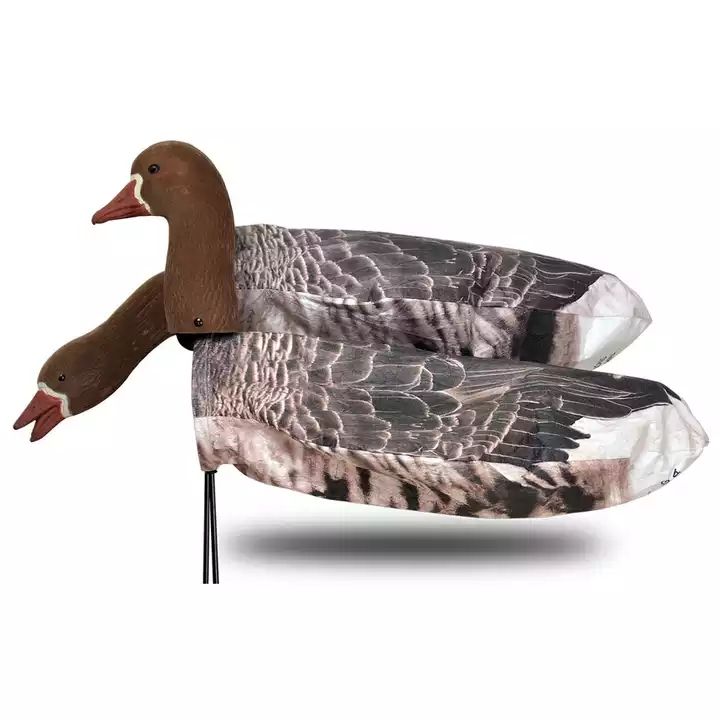Title: The Difference between Feather and Down: Understanding the Unique Properties of Goose and Duck Feathers
The Difference between Feather and Down: Understanding the Unique Properties of Goose and Duck FeathersWhen it comes to goose and duck feathers, there are some key differences that set them apart from one another. Goose feathers are generally larger and stronger than duck feathers, making them ideal for use in jackets, coats, and other outerwear. They also have a unique ability to resist water and snow, providing extra warmth and protection in cold weather.On the other hand, duck feathers are smaller and more delicate than goose feathers, but they also possess their own set of benefits. Duck feathers are often used in pillow covers, quilts, and other bedding materials due to their soft and insulating properties. They also have a natural water-repellent quality that helps keep them dry and clean.So, when choosing between goose and duck feathers, it is important to consider the specific needs and uses for which you need them. Goose feathers are better suited for outdoor wear, while duck feathers are more appropriate for indoor use. Understanding these differences can help you make a more informed decision when purchasing or using these unique natural resources.
When it comes to keeping warm, there are few materials as effective as feather and down. Both are lightweight, have excellent insulation properties, and are naturally hypoallergenic, making them perfect for use in jackets, coats, and other winter wear. However, when it comes to choosing between feather and down, there are some key differences to consider.
Firstly, the source of the feather and down makes a significant difference. Goose and duck feathers are the most commonly used in clothing, with goose down being particularly prized for its superior insulation and lightweight qualities. Duck down, on the other hand, is often used in less expensive clothing lines due to its slightly coarser texture and less-than-superior insulation properties.
The insulation properties of feather and down are also different. Goose down has an excellent ability to trap air, creating a layer of warmth that effectively blocks out the cold. Duck down, on the other hand, is not as good at this and may not provide quite as much warmth. This is due to the different shapes and structures of the feathers themselves; goose feathers are more tightly packed and have a more complex structure than duck feathers, which allows them to retain heat better.

Another difference between feather and down is their feel when worn. Goose down is soft and lightweight, providing a comfortable layer of warmth without adding any bulk or weight to your clothing. Duck down, on the other hand, can sometimes feel coarser and bulkier when worn. This is due to the shorter fibers in duck down compared to goose down, which can make it more difficult for manufacturers to process and maintain its natural feel.
Cost is also a consideration when it comes to choosing between feather and down. Goose down is generally more expensive than duck down due to its superior insulation and lightweight qualities. However, there are some cases where duck down may be more expensive if it is sourced from certain breeds or has been processed in a way that enhances its performance. In general, though, you can expect to pay more for goose down than for duck down when shopping for winter clothing.

Finally, there are some environmental considerations to keep in mind when it comes to feather and down. Goose and duck feathers are both natural materials that have been used for centuries in clothing and bedding. However, the industry has come under scrutiny in recent years for its impact on the environment and wildlife. Many manufacturers now take steps to ensure their feather and down products are sourced from sustainable sources and processed in ways that reduce their environmental footprint.
In conclusion, feather and down are both excellent materials for keeping warm in winter. However, there are some key differences to consider when it comes to choosing between them including their source, insulation properties, feel when worn, cost, and environmental impact. Understanding these differences can help you make a more informed decision when it comes to purchasing winter clothing or bedding.

Articles related to the knowledge points of this article:
Title: The Art of Tie Knotting: A Comprehensive Guide to Tie Knot Styles
Title: How to Write 领带 in English? The Ultimate Guide
A Review of the Hooded Down Jacket
Title: The Evolution of Tie Selections for Wedding Ceremonies: Between a Bow Tie and a Tie
White Goose Down Jacket: A Symbol of Winter Warmth
Title: Embroidered Scarves and Shawls: A Cultural Exploration



